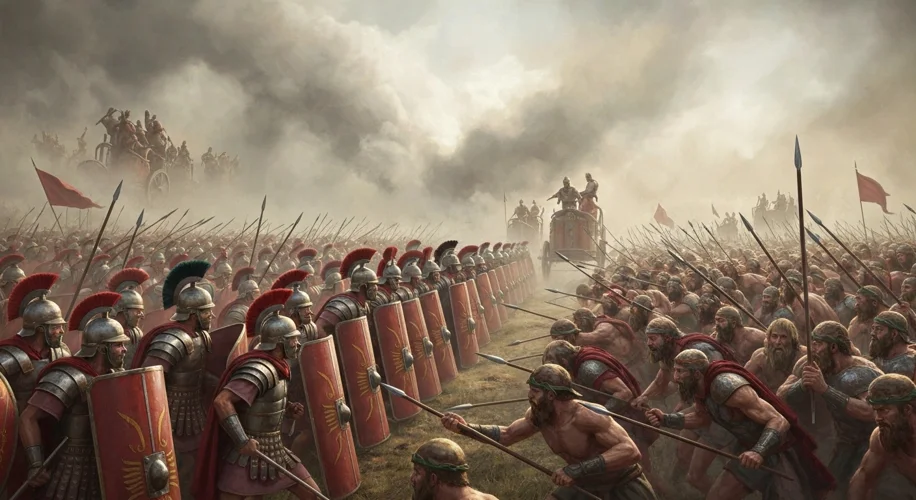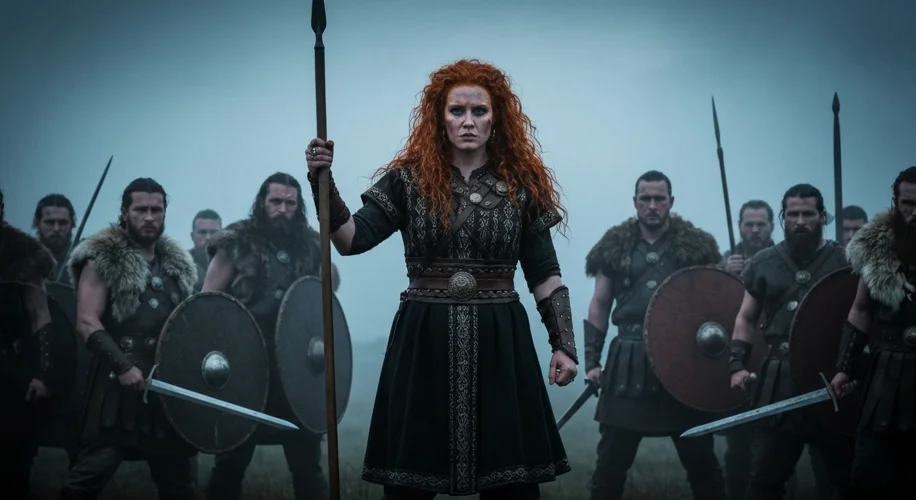The biting wind whipped across the windswept plains of Britain, carrying the scent of brine and the unspoken threat of Roman legions. In the year 60 CE, a name would soon echo through the annals of history, a name synonymous with defiance and fury: Boudica. She was the queen of the Iceni tribe, a woman whose life, marked by tragedy and betrayal, would ignite a rebellion that shook the foundations of the Roman Empire.
Before the eagle standards of Rome cast their long shadow over the land, Britain was a mosaic of proud Celtic tribes. The Iceni, a powerful people of what is now East Anglia, lived in a relative balance with their neighbors, their society structured around chieftains, warriors, and a deep connection to their land and traditions. Their world was one of ritual, skilled craftsmanship, and a fierce independence. Into this world, the Roman Empire, ever-expanding, had arrived a decade earlier, not as conquerors in the initial sense, but as allies to some and a formidable presence to all.
Following the death of Prasutagus, the king of the Iceni, in 60 or 61 CE, the carefully negotiated peace shattered. Prasutagus, in a bid to protect his kingdom and family, had named the Roman Emperor Nero co-heir alongside his daughters. This was a gamble, an attempt to appease the ravenous appetite of Rome. But the Roman governor, Gaius Suetonius Paulinus, and his procurator, Catus Decianus, saw only opportunity. They disregarded Prasutagus’s will, confiscated Iceni lands, flogged Boudica, and, in a brutal act of violation, raped her daughters.
This unspeakable cruelty was not merely an attack on a queen and her children; it was an assault on the very honor and dignity of the Iceni people. The Romans, driven by greed and a disdain for the “barbarian” tribes they subjugated, had underestimated the depth of their victims’ resolve. Boudica, her body bearing the marks of Roman brutality and her spirit burning with righteous vengeance, rose from her humiliation.

News of the atrocities spread like wildfire. The Trinovantes, a neighboring tribe oppressed by Roman settlement and confiscation of their sacred groves, joined the Iceni. Boudica, a charismatic and powerful orator, rallied thousands. Her war cry was not just for freedom, but for retribution. The rebellion began with a savage attack on Camulodunum (modern Colchester), the first Roman capital in Britain. The colonists, unprepared for such fury, were overwhelmed. The Temple of the Deified Claudius, a symbol of Roman power, was razed, its inhabitants slaughtered.
The rebels then marched on Londinium (London), a thriving commercial center. Despite its strategic importance, the Romans had underestimated its vulnerability. Boudica’s army, fueled by a potent mix of rage and desperation, descended upon the city. The Romans, realizing their untenable position, evacuated, but not before Londinium was put to the torch, its streets flowing with the blood of its inhabitants. Verulamium (St Albans) met a similar fate. It is estimated that over 70,000 Romans and Roman sympathizers perished in these initial onslaughts.
Governor Suetonius Paulinus, who had been campaigning in Wales against the Druids on the island of Mona (Anglesey), rushed back to face the rebellion. He gathered his legions and auxiliary troops, a formidable force, though significantly outnumbered by Boudica’s vast army, which by some accounts swelled to over 230,000 warriors. Boudica, with her formidable war chariots and a seemingly unstoppable wave of warriors, confronted Paulinus’s disciplined legions in a pitched battle, likely near the Watling Street.

The battle was a turning point. While Boudica’s forces fought with immense ferocity, the disciplined Roman formations, their superior armor, and their tactical prowess proved decisive. The narrow battlefield, possibly chosen by Paulinus, further hampered the Britons. The Romans, with their pila (javelins) and gladii (swords), systematically cut down the attacking tribes. The outcome was a devastating defeat for Boudica and her people. Cassius Dio, a Roman historian writing decades later, described the scene as a massacre, with tens of thousands of Britons falling, while the Romans suffered relatively light casualties.
The aftermath was grim. Boudica, having lost her army and her cause, is said to have taken poison to avoid capture. Her fate, like much of her life, remains shrouded in a degree of mystery. The Roman victory was brutal. Suetonius Paulinus, in a chilling display of imperial power, ordered a scorched-earth policy, further devastating the land and its people. The rebellion had been crushed, but at a terrible cost to both sides.
The legacy of Boudica is one of fierce resistance against overwhelming odds. She became a symbol of British defiance against foreign occupation, a powerful figure who, for a brief, terrifying period, brought the mighty Roman Empire to its knees. Her story, though filtered through Roman historians who naturally portrayed the rebellion in a negative light, continues to resonate as a testament to the courage of those who fight for their freedom, even in the face of seemingly insurmountable power. The echoes of her fury, though centuries old, still whisper on the winds of Britain, a reminder of the queen who dared to challenge an empire.

